
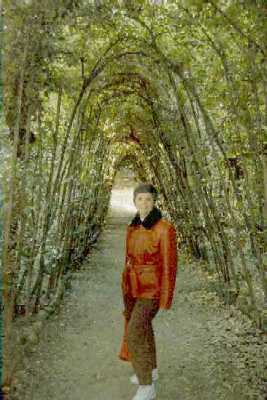
By now we had learned to ration the November sunlight and so made sure we got to the highly anticipated Boboli Gardens by early afternoon to see whatever late fall glory they may have left for us. The Boboli was one of the earliest (and still is among the best) Renaissance gardens, taking about 100 years to complete starting around 1549. Greenery (like industrial strength shrubs) and statues are popular with few flowers at this time of the year.
The park is long and thin, meant to fill the empty space between the Medici's Pitti palace and a huge fortified wall meant to keep the enemy (in this case Siena) out. We walked the park from its far end back to the Pitti Palace. This highlight of this end of the park is an oval island filled with statues and set in a matching oval pool. Here's a picture of it through the locked gates (the island is accessible only in May and June). Between the two statues lies a moat which defines the twin ovals of pool and island:
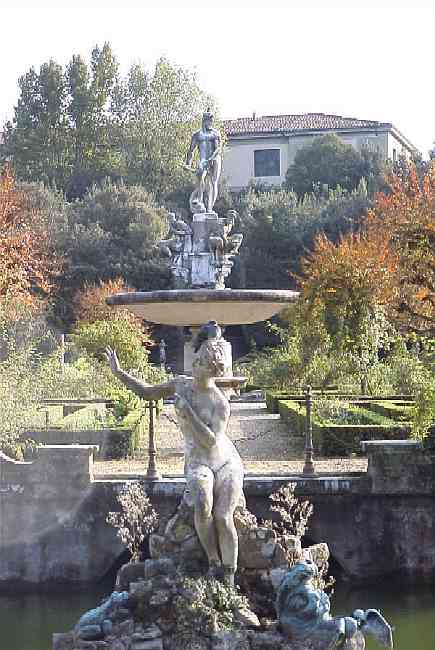
The far statue is Giambologna's Oceanus Fountain -- or more accurately a copy as the original has been moved into Florence's famous (but for us closed) Bargello sculpture museum.
Much of the rest of the park is filled with grottoes and tree-shaped paths like the one in the picture at the top of the page. An elaborate labyrinth was destroyed in the 19th century to make a carriage path. At least they didn't have asphalt then.
The builders of the Pitti Palace quarried the stone from behind the site, leaving a big pit in the backyard. The solution was to build an oblong amphitheater patterned on a Roman Circus (horse track). Even the holes get decorated in Florence! As part of an 1589 Medici wedding entertainment, the first opera was performed here. In the picture below, you can see one wall of the amphitheater with an Egyptian obelisk of Ramses II.
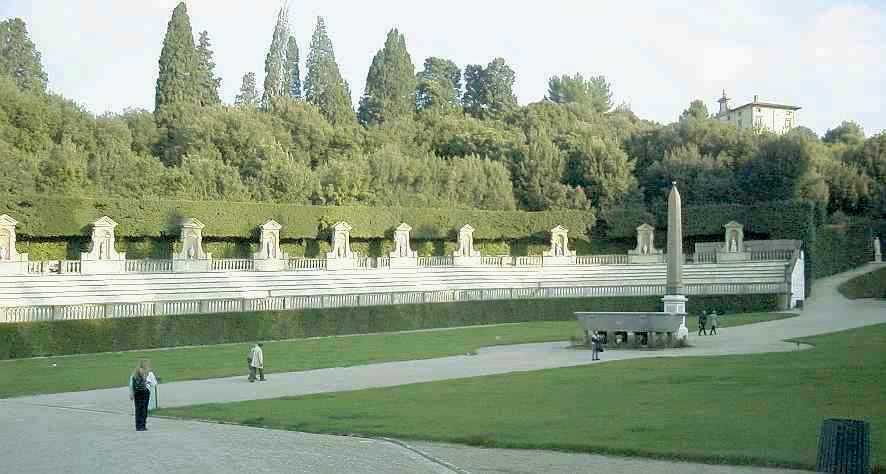
Between the Amphitheater and the palace is this fountain below, the Fontana del Carciofo. This picture helps give a feel for the full effect of the amphitheater.
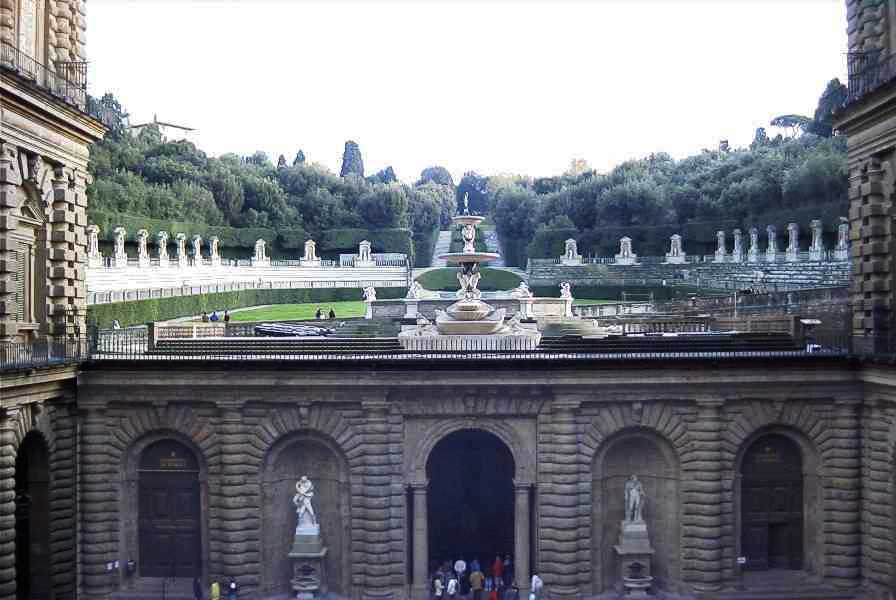
Walking around the fountain towards the entrance to the Pitti Palace, you see this view of the North side of the Arno and the landmark cathedral dome:
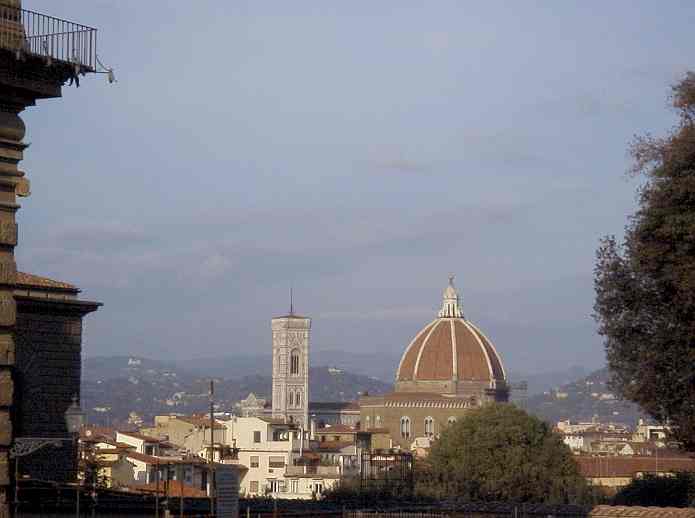
At the entrance to the garden, near the palace, this famous Bacchus Fountain (more like a Texas sized spittoon) is nearly hidden against the wall. While this statue is mentioned in most Florence guidebooks, it is small and easy to miss. Being unable to find the guy who posed for Michelangelo's David, Cioli immortalized as the model for Bacchus Pietro Barbino, the court dwarf of the Medicis. Given the tendency of my midlife midriff , Pietro is my new roll model:
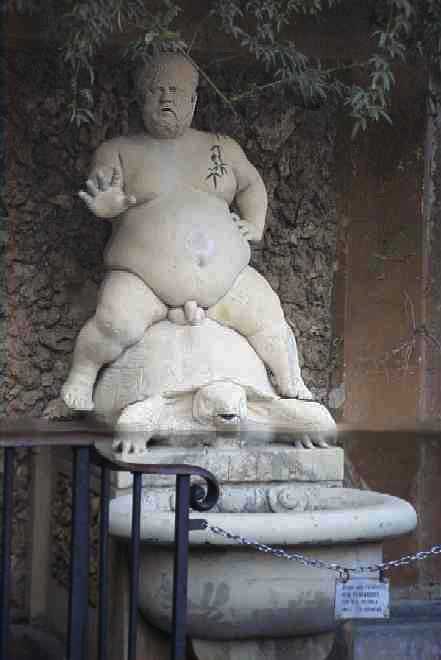
Any interested sculptors? Bring your own turtle, I'll provide plenty of flab.
Getting chilly in this November air or just disgusted by puns? We promise to fix the first problem if you will join us inside the Palazzo Pitti by clicking here.
Where do you want to go today? Here's a few choices:
